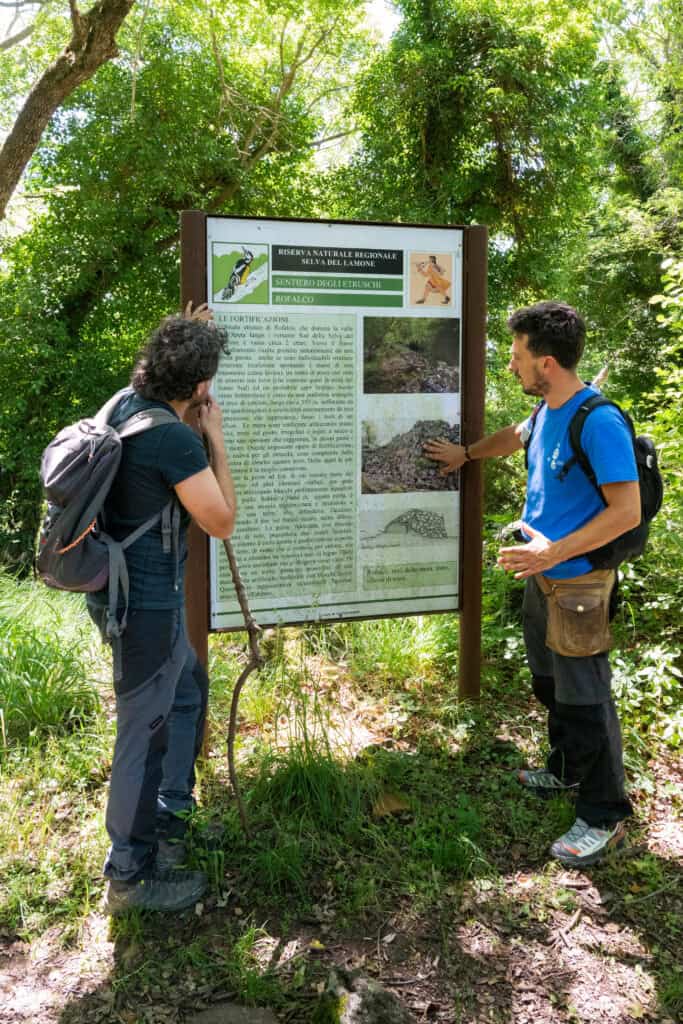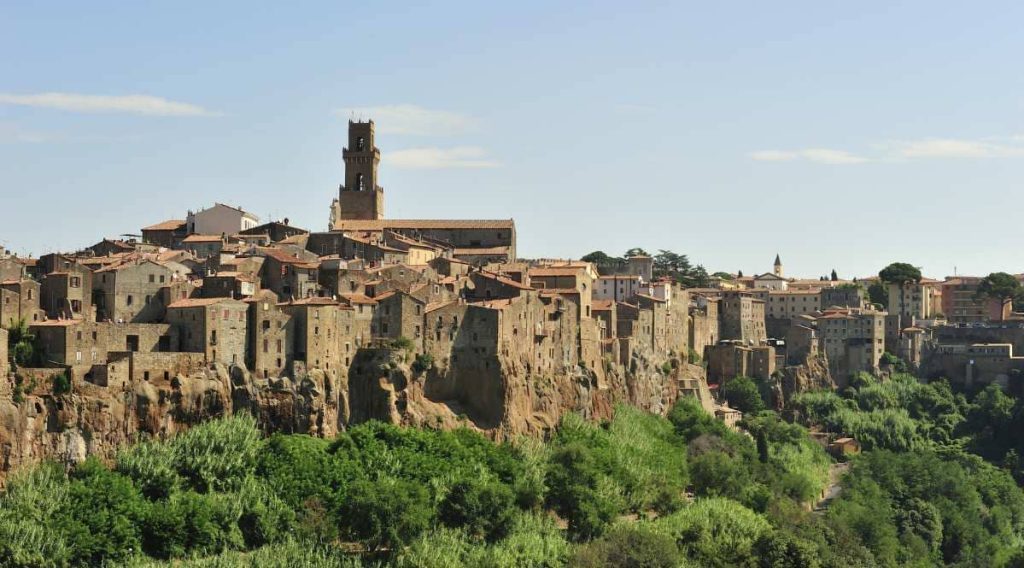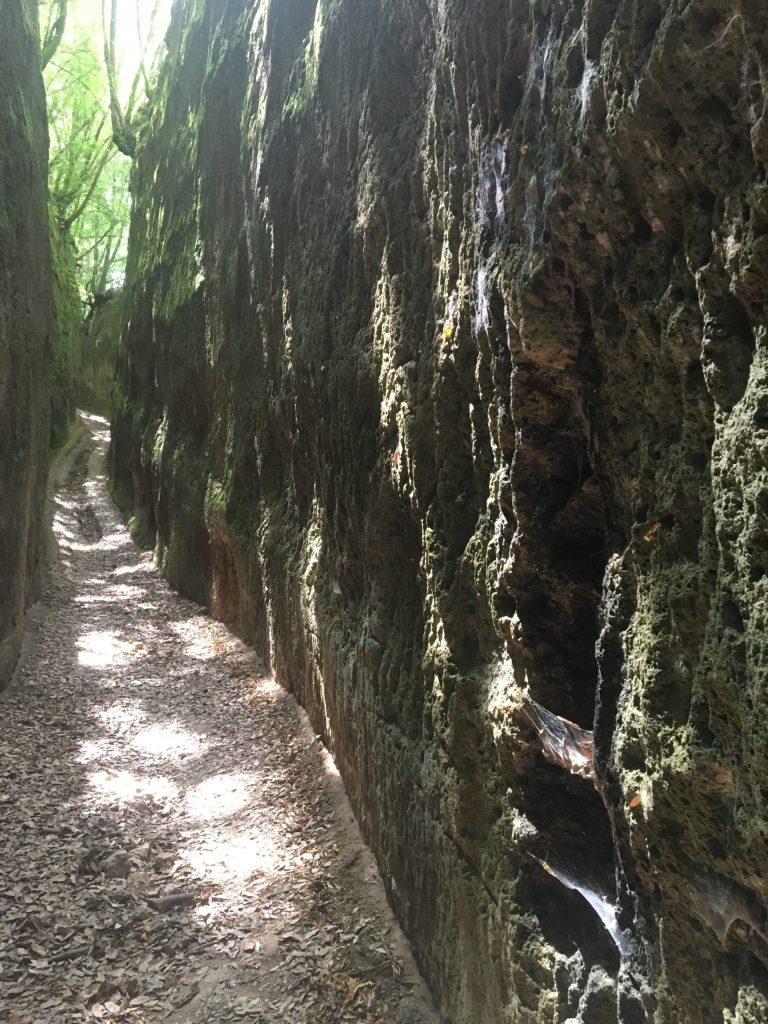The Lamone forest: nature and history in the heart of Tuscia
The Lamone forest in the heart of Tuscia: volcanic forest between lava rocks, Etruscans, brigands, and biodiversity. Explore its trails and legends.
🌌 A treasure of the Lazio Maremma
The Lamone forest, located in the municipality of Farnese in the province of Viterbo, is one of the most fascinating places in Tuscia, an area often referred to as the Lazio Maremma. Covering around 2,000 hectares, this Regional Nature Reserve is a mosaic of dense woodland, enormous lava boulders, and labyrinthine paths.
At first sight, it may look like a primeval wilderness, yet the Lamone is in fact a place where nature and human history have been intertwined for millennia.
🌋 Volcanic origins
The unique landscape of the Selva del Lamone is the result of the eruptions of the Latera Volcano, which shaped the area between 150,000 and 50,000 years ago. When the lava flows cooled and broke apart, they created a vast expanse of basaltic boulders.
Today, walking along the trails means encountering moss-covered rocks, deep fissures, and sudden drops: a true natural labyrinth where geology takes center stage.
🌿 A forest dwelled by man
Although the Selva appears today as a wild and primordial environment, it has actually always been intensely inhabited by humans.
Here, Etruscan settlements (such as the site of Rofalco), remains of Roman roads, traces of medieval churches, and ancient routes connecting villages intersect. For centuries, the Selva has also been a site of agricultural and pastoral activities: charcoal production, sheep farming, and firewood gathering have shaped the lives of local communities.
Today, walking its paths means immersing oneself not only in nature, but also in a millennia-old history of trade, exchange, and traditions.
🦌 Biodiversity among rocks and woods
The Selva hosts a remarkably rich biodiversity. The forest is dominated by oak, Turkey oak, and holm oak, while ferns, hornbeams, and alders thrive in the moister areas.
Wildlife includes wild boar, roe deer, porcupines, badgers, wildcats, and birds of prey such as the common buzzard. At night, the haunting call of the tawny owl echoes through the woods, reminding visitors that nature here still follows its ancient rhythms.
🏞️ Brigands and legends
In past centuries, the dense vegetation and lava mazes provided an ideal hideout for brigands. Among them, the most famous was Domenico Tiburzi, the so-called “King of the Maremma”, a controversial figure between myth and history, who is said to have sought refuge in the Selva to evade capture.
Alongside these historical accounts, popular tales tell of spirits and mysterious presences, which continue to feed the forest’s enigmatic charm.
🚶♂️ Exploring the Selva today
Today, the Selva del Lamone is a protected reserve with a network of marked trails, perfect for curious hikers and nature lovers.
One of the most striking itineraries leads to the Ruin of Rofalco, an Etruscan fortified settlement overlooking the forest. Other paths cross areas once used for charcoal production, allowing visitors to imagine the daily life of charcoal burners and to appreciate how humans have long coexisted with this woodland without ever fully taming it.
🌟 Conclusion
The Selva del Lamone is a place where history, legend, and nature meet. The volcanic eruptions of 50,000 years ago shaped a landscape later inhabited by humans: from Etruscans and Romans to medieval monks, charcoal burners, and brigands.
Walking through the Lamone today means embarking on a multilayered journey—into volcanic geology, forest biodiversity, archaeological remains, and rural traditions.
It is an experience of strong, authentic emotions that makes the Lazio Maremma and Tuscia an essential destination for those who love slow travel, hiking, and cultural discovery.
Would you like to know more? well then book a hike with me to visit this enchanted place!



